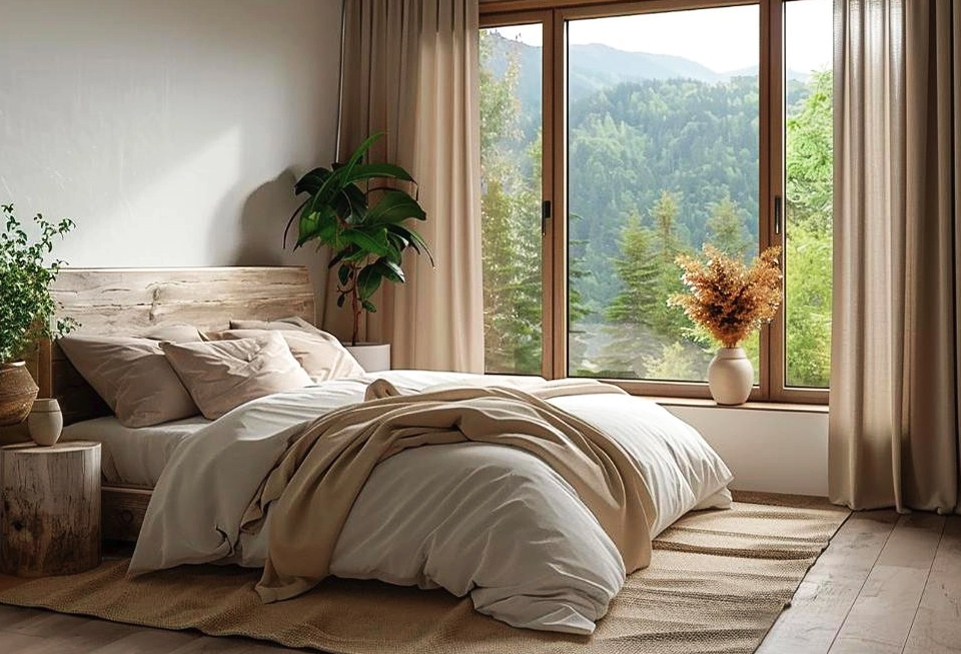close
Choose Your Site
Global
Social Media


Views: 0 Author: Site Editor Publish Time: 2025-09-19 Origin: Site

When it comes to transforming your living space into a haven of luxury and comfort, velvet upholstery is the ultimate choice. At Hangzhou Tengshi Weaver Co., Ltd., we specialize in crafting high-quality velvet fabrics that not only enhance the aesthetic appeal of your furniture but also provide unparalleled comfort and durability. Our extensive range of velvet options ensures that you can find the perfect fabric to match your style and needs.
Velvet, a fabric that screams luxury and comfort, has been a favorite for generations. It’s not just about looks; velvet’s dense pile gives furniture a soft, plush feel. Plus, it reflects light beautifully, adding a touch of elegance to any piece. Whether you’re aiming for a bold statement or a subtle touch of class, velvet can transform your space. Let’s dive into how to pick the perfect velvet for your upholstery needs.
Cotton velvet is a classic choice. It’s soft, breathable, and has a natural, matte finish. Great for sofas and armchairs, it feels cozy and inviting. But it’s not the toughest option. Cotton velvet might need a bit more TLC compared to synthetic types. If you’re looking for a traditional feel with a touch of luxury, cotton velvet could be your go-to.
Mohair velvet is the tough guy of the velvet family. Made from Angora goat hair, it’s super durable and can handle daily wear and tear. It’s perfect for high-traffic areas like family rooms. While it doesn’t have the same shiny finish as silk velvet, mohair offers a soft texture that lasts. If you’ve got kids or pets, mohair velvet is a smart choice.
Silk velvet is the queen of the velvet world. It’s incredibly soft, shiny, and looks absolutely stunning. But it’s also delicate and needs careful handling. Best reserved for accent chairs or formal areas, silk velvet adds a touch of opulence. If you’re aiming for a high-end look, silk velvet is the way to go. Just be ready to pamper it a bit more.
Synthetic velvets, like those made from polyester, are the practical cousins. They’re affordable, resist stains, and won’t fade easily. Perfect for everyday use, synthetic velvets offer the look of luxury without the high maintenance. If you’re on a budget but still want that velvet feel, synthetic options are your friend.
Crushed velvet has a unique, wrinkled texture that catches the light in different ways. It’s bold and adds a dynamic look to any piece. Whether you’re upholstering an ottoman or making curtains, crushed velvet can make a statement. Plus, it’s pretty durable and can handle regular use.
Need something flexible? Stretch velvet is your answer. It’s made with a bit of spandex, making it perfect for curved or tufted furniture. It’s smooth, flexible, and maintains its shape well. If you’re working with complex designs, stretch velvet can make your job easier.
| Type of Velvet | Characteristics | Best Uses | Pros | Cons |
|---|---|---|---|---|
| Cotton Velvet | Soft, breathable, natural matte finish | Sofas, armchairs | Cozy and inviting, traditional feel | Less durable, requires more care |
| Mohair Velvet | Extremely durable, made from Angora goat hair | High-traffic areas, family rooms | Durable, soft texture | Less shiny than silk velvet |
| Silk Velvet | Incredibly soft, shiny, luxurious | Accent chairs, formal areas | High-end look, opulent | Delicate, needs careful handling |
| Synthetic Velvet | Affordable, stain-resistant, doesn’t fade easily | Everyday use, budget-friendly | Low maintenance, durable | May lack depth of natural velvets |
| Crushed Velvet | Unique wrinkled texture, catches light in different ways | Ottomans, curtains | Bold, dynamic look | May not be as resistant to heavy use |
| Stretch Velvet | Flexible, made with spandex, smooth | Curved or tufted furniture | Ideal for complex designs, maintains shape | Requires special care |
How much use will your furniture get? If it’s in a high-traffic area, you’ll want a durable velvet like mohair or synthetic. For decorative pieces, more delicate options like silk velvet can work. Check the fabric’s rub test to gauge its durability.
Velvet is all about comfort. Silk and synthetic velvets offer a smooth, plush feel. Linen velvet, on the other hand, is cooler and more breathable. Think about how the fabric will feel against your skin when you’re making your choice.
Some velvets are easier to clean than others. Polyester and synthetic velvets are low-maintenance and resist stains. Silk and cotton velvets might need more careful handling. Regular vacuuming and spot cleaning can keep your velvet looking its best.
Velvet comes in a rainbow of colors and styles. Rich jewel tones like emerald green and sapphire blue make a bold statement. Neutral colors like beige and grey offer a more subtle elegance. Consider how the color will fit with your existing decor.
Velvet prices vary widely. Silk velvet is the most expensive, while synthetic options are more budget-friendly. Decide on your budget before you start shopping. You can find high-quality velvets at different price points.
Taking care of velvet upholstery starts with regular maintenance. Vacuuming your velvet furniture with a soft brush attachment is essential. This helps remove dust and dirt that can build up over time. Regular dusting also keeps the fabric feeling soft and plush. One important tip is to avoid direct sunlight. Prolonged exposure to sunlight can cause velvet to fade, so it’s best to position your furniture away from windows or use curtains to filter out harsh UV rays.
When it comes to spot cleaning, velvet requires a gentle touch. For small stains, use a clean, damp cloth and a mild detergent. Gently blot the area without rubbing to avoid damaging the pile. Rubbing can flatten the fibers and leave marks. For tougher stains, it’s best to consult a professional cleaner. They have the expertise and tools to handle velvet without causing damage.
For deep cleaning, professional upholstery cleaners are your best bet. They have the experience and specialized tools to clean velvet without damaging it. Professional cleaning can restore the fabric’s original look and feel, making it look as good as new. It’s worth investing in professional services to keep your velvet looking its best.
Protecting your velvet from sunlight is crucial. Direct sunlight can cause fading over time, which can be difficult to reverse. Position your furniture away from windows or use heavy curtains to block out harsh sunlight. This simple step can significantly extend the life of your velvet upholstery.

When working with velvet, choosing the right needle is important. Use a sharp, fine needle that’s suitable for velvet. A universal size 70/10 or 80/12 needle usually works well. This ensures that your stitches are neat and won’t damage the fabric.
Velvet has a distinct pile that runs in one direction. Always sew with the pile to maintain a smooth appearance. Sewing against the pile can cause the fabric to look uneven and feel rough. Paying attention to the pile direction ensures that your finished piece looks polished and professional.
A walking foot is a valuable tool when sewing with velvet. It helps feed the fabric evenly, preventing it from shifting or bunching as you sew. This is especially important with velvet, as its thick pile can make it tricky to sew. A walking foot ensures that your seams are straight and even.
Pins can leave permanent marks on velvet, so it’s best to avoid them. Instead, use fabric clips or baste seams by hand. This prevents damage to the fabric and keeps your velvet looking pristine. Taking this extra step can make a big difference in the final appearance of your project.
Before starting your main project, test your stitch settings on a scrap piece of the same velvet. This allows you to adjust the tension and stitch length as needed. Velvet can be sensitive to the pressure and tension of the sewing machine, so testing first ensures that your stitches are perfect.
When pressing velvet, avoid direct contact with an iron, as it can crush the pile. Instead, use a velvet pressing board or a thick, plush towel. Gently steam from above to remove wrinkles without damaging the fabric. This technique helps maintain the luxurious texture of velvet.
Velvet can transform sofas, armchairs, and dining chairs. Choose a velvet that complements the room’s color scheme and style.
Velvet curtains add drama and insulation. Consider using velvet for a statement window treatment in living rooms.
Accent pillows and cushions in velvet add texture and warmth. Mix and match with other fabrics for a layered look.
Upholstering a headboard in velvet creates a luxurious focal point in a bedroom. Select a color that enhances the room’s ambiance.
In commercial settings like hotels and restaurants, velvet upholstery adds sophistication. Use durable options like synthetic velvet for high-traffic areas.
Think beyond traditional applications. Velvet can be used for wall panels, lampshades, or even upholstered artwork.
| Project Type | Description | Tips |
|---|---|---|
| Furniture Upholstery | Transform sofas, armchairs, and dining chairs with velvet. | Choose a velvet that matches the room’s color scheme and style. |
| Curtains and Drapes | Add drama and insulation with velvet curtains. | Use velvet for statement window treatments in living rooms. |
| Cushions and Pillows | Create accent pillows and cushions for added texture and warmth. | Mix and match with other fabrics for a layered look. |
| Headboards | Upholster headboards for a luxurious focal point in the bedroom. | Select a color that enhances the room’s ambiance. |
| Commercial Spaces | Add sophistication to hotels and restaurants with velvet upholstery. | Use durable options like synthetic velvet for high-traffic areas. |
| Custom Creations | Think beyond traditional uses—velvet can be used for wall panels, lampshades, or upholstered artwork. | Experiment with unique applications to add a touch of luxury. |
A: The best type of velvet fabric for upholstery depends on your needs. For high-traffic areas, mohair or synthetic velvet is ideal due to their durability. For a luxurious look, silk velvet is perfect but requires more care.
A: Yes, velvet is suitable for everyday use, especially if you choose durable types like mohair or synthetic velvet. These types are resistant to stains and wear.
A: To protect velvet from fading, avoid placing furniture in direct sunlight. Use curtains or blinds to filter out harsh UV rays.
A: To prevent crush marks, avoid placing heavy objects on velvet for extended periods. Regularly fluff cushions and rotate them to distribute wear evenly.
Choosing the right velvet fabric for upholstery is all about balancing aesthetics, durability, and maintenance. Whether you’re aiming for a luxurious silk velvet or a practical synthetic option, understanding the different types and their benefits is key. By following these tips, you can find the perfect velvet to elevate your space and add a touch of elegance.